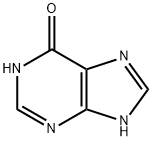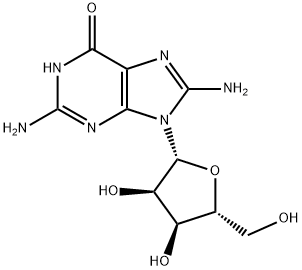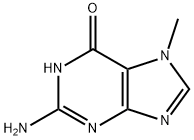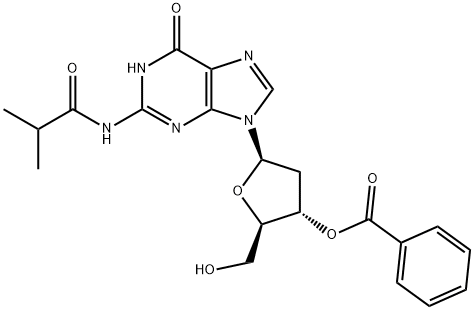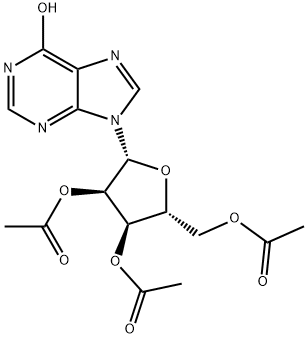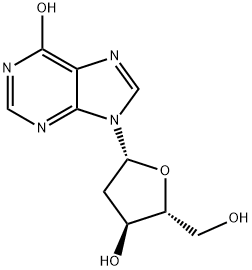Hypoxanthine , 99% , 68-94-0
Synonym(s):
6-Hydroxypurine;Hypoxanthine;Hypoxanthine - CAS 68-94-0 - Calbiochem
CAS NO.:68-94-0
Empirical Formula: C5H4N4O
Molecular Weight: 136.11
MDL number: MFCD00005725
EINECS: 200-697-3
| Pack Size | Price | Stock | Quantity |
| 5G | RMB24.00 | In Stock |
|
| 25G | RMB39.20 | In Stock |
|
| 100G | RMB90.40 | In Stock |
|
| 500g | RMB352.80 | In Stock |
|
| others | Enquire |
PRODUCT Properties
| Melting point: | >300 °C (lit.) |
| Boiling point: | 250.36°C (rough estimate) |
| Density | 1.4295 (rough estimate) |
| refractive index | 1.8500 (estimate) |
| storage temp. | 2-8°C |
| solubility | 1 M NaOH: 25 mg/mL |
| form | powder |
| pka | 8.7(at 25℃) |
| color | Colorless to yellow to brown, darken on storage with no loss of purity |
| Odor | Odorless |
| biological source | synthetic (organic) |
| Water Solubility | practically insoluble |
| Merck | 14,4869 |
| BRN | 5811 |
| InChIKey | FDGQSTZJBFJUBT-UHFFFAOYSA-N |
| LogP | -0.910 (est) |
| CAS DataBase Reference | 68-94-0(CAS DataBase Reference) |
| NIST Chemistry Reference | Hypoxanthine(68-94-0) |
| EPA Substance Registry System | Hypoxanthine (68-94-0) |
Description and Uses
Hypoxanthine is a naturally occurring purine derivative and intermediate in the synthesis of uric acid. It is elevated in the spinal fluid of patients with Lesch-Nyhan syndrome, a metabolic disorder whose symptoms include cerebral palsy, cognitive deficits, motor dysfunction, self-mutilation, and hyperuricemia. Injection of hypoxanthine (10 μM) increases succinate dehydrogenase and complex II activities and decreases cytochrome c oxidase activity, resulting in neuroenergetic impairment, ATP depletion, and cellular apoptosis in rat striatum. It is also used to induce hyperuricemia in mice for use in the development of hypouricemic agents.
Hypoxanthine, is used as a marker for energy perturbation in hypoxia/ ischemia. The compound has been used in studies as in indicator, along with uric acid and allantoin , of in vivo free radical reactions. It has been also used in DNA studies to investigate the destabilizing effect it has on DNA duplexes containing hypoxanthine as a base, in a gas phase versus a liquid phase. Hypoxanthine has also been used in studies along with 8-oxoguanine nucleotides to investigate their interaction with human DNA pol ? (DNA polymerase alpha) and DNA polymerase I from Bacillus stearothermophilus. It is also used as a pharmaceutical intermediate.
Safety
| Symbol(GHS) |  GHS07 |
| Signal word | Warning |
| Hazard statements | H302-H315-H319-H335 |
| Precautionary statements | P261-P264b-P270-P271-P280-P302+P352-P304+P340-P305+P351+P338-P312-P330-P362+P364-P403+P233-P501c |
| Hazard Codes | Xn |
| Risk Statements | 36/37/38-22-40 |
| Safety Statements | 22-24/25-37/39-26-36 |
| WGK Germany | 3 |
| RTECS | UP0791000 |
| Hazard Note | Harmful |
| TSCA | Yes |
| HS Code | 29335990 |
| Toxicity | LD50 intraperitoneal in mouse: 750mg/kg |

